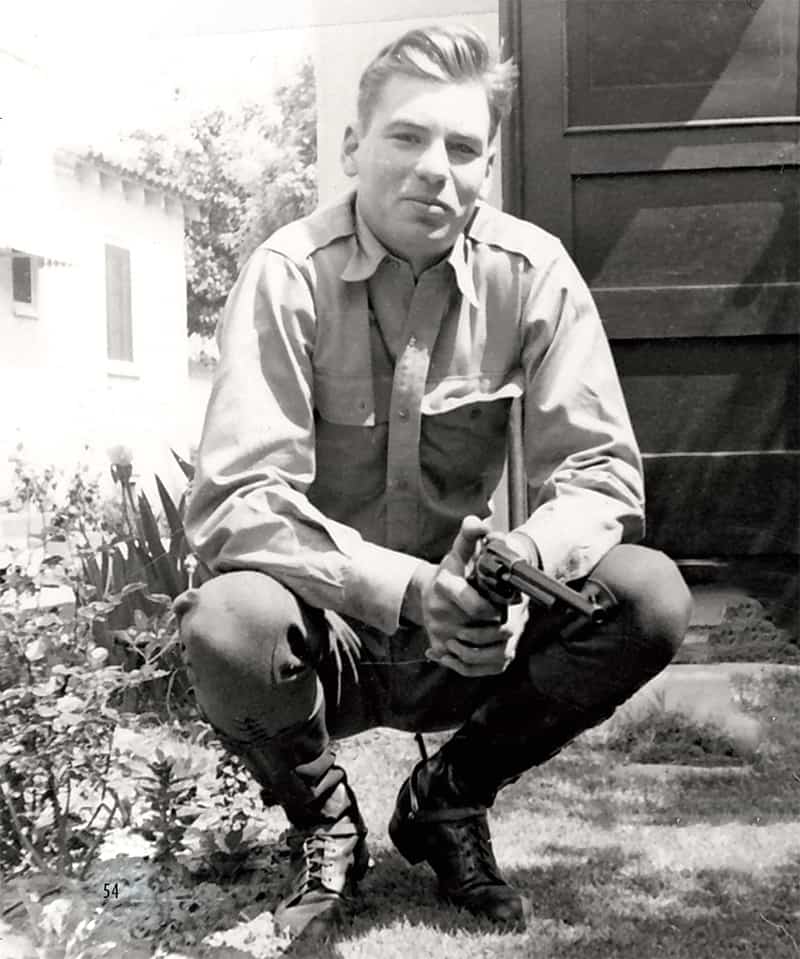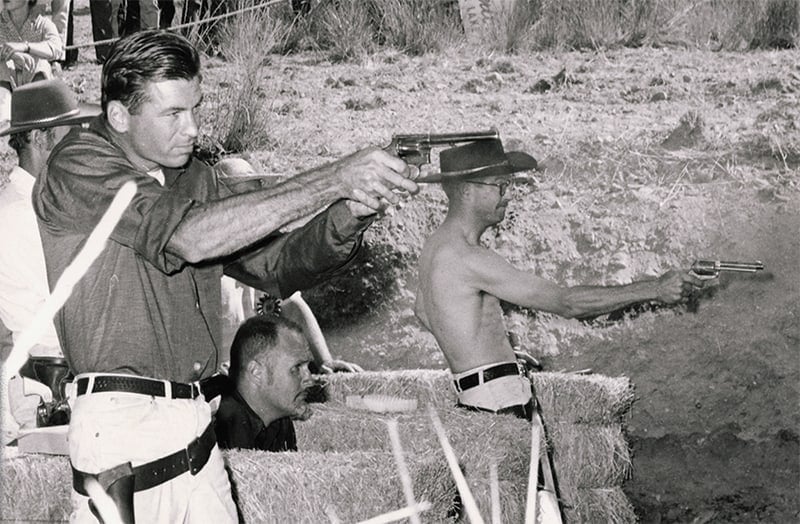This is a lengthy history of Weaver’s growing acquaintance with shooting and the grip, stance, and style that he developed over the years. It’s part biographical and includes interesting input from Jeff Cooper. An engaging piece if you’re mature or patient enough to read beyond sound bytes and blurbs.
In the beginning was point shooting. For those precious few who prepared themselves to use a pistol as a serious defensive weapon, it was fired from the hip, without the benefit of sights. For others, including target shooters and law enforcement officers alike, the pistol was fired at arm’s length, onehanded, and, often, very slowly. Either way, the pistol was a one-handed gun, and the unfortunate thing was neither the close-quick-dirty approach nor formal pistolcraft bore any real resemblance to the skills needed to survive a real-life shooting. And then in 1959, along came an L.A. County Sheriff’s Deputy who held his pistol with both hands, hit what he aimed at, and did it faster than anyone else. His name was Jack Weaver, and as Jeff Cooper put it, “He showed us the way.”

Photo from the article: Weaver during his military days, with a single-action Colt Peacemaker. Note the high boots and the spurs — standard uniform for the mule pack to which he was assigned.
[…]
During this year of practice, however, he realized if he brought the pistol up a foot higher, and dropped his head just a bit, he could get a split-second look at his sights before pulling the trigger. Thus was born the Weaver Stance: two hands on the gun, with a flash sight picture and the offside foot placed a little forward. So in 1959, the trophy marked “Leatherslapping: Best Overall Gunfighter” went home with Jack H. Weaver’s name engraved on it. What made his win so sensational was no one had ever seen a pistol shot like Weaver was shooting his. “It looked kind of stupid,” he concedes. “Everybody was laughing at me, but it worked. I took the money.” Laugh though they might, he had found something that worked, and it worked consistently.
“They’re a stubborn bunch,” Jack says of the early combat shooters. “They kept laughing at me and thinking it was funny, and I thought, ‘that’s great!’” It got to the point the Weavers could get a hotel room and buy dinner, and count on paying for it with the winnings. After being beaten three years in a row, Jeff Cooper gave some careful thought to Weaver’s shooting position, finally announcing it was “Decisively superior” to anything else.
From his bully pulpit writing for Guns & Ammo, Cooper described the matches and the lessons learned, ultimately distilling them into the Modern Technique of the Pistol that formed the backbone of his teaching. In 1987, when Cooper was interviewed in Handgunner, he stated “Most of what I’ve done in my life has been eclectic — taking the best ideas of other people and putting them to use.” True to form, though he popularized it and taught it, he always gave Jack Weaver the credit for the stance. Indeed, it was Cooper who named it the “Weaver Stance.”
Honorable men and note, not an ounce of fat.

Also from the article: The early days: from left to right are Jack Weaver, Jeff Cooper, and Eldon Carl.
Here’s some of that old-fashioned American ‘never give up.’ When you know something is good keep at it; sooner or later, you’ll be recognized. Fortunately for Weaver and us, it wasn’t posthumously.
And so time passed. Jack got a letter from the FBI National academy in 1982, letting him know they had adopted the Weaver stance. The Weaver Stance became the Modified Weaver, and became a part of the Modern Technique of the Pistol, as set forth in the Gregory Morrison book of the same title. Cooper, of course, went on to found Gunsite Academy, where the Weaver Stance remains part of their core doctrine. There’s even a framed photo of Jack Weaver hanging on the wall in the main classroom, alongside portraits of Thell Reed, Elden Carl, Ray Chapman and Bruce Nelson, all shooting from the Weaver stance. Gunwriters still never tire of arguing Weaver vs. Isoceles, although the Weaver is now so universal it even popped up by name in the movie Meet the Fokkers. While the stance became a part of the culture, the man behind it was almost forgotten — almost.
The article continues at the link and here’s a good representative photo; one man is point shooting, but Weaver is using his sights and wins.

Again from the article: Weaver, winning the 1959 Leatherslap. That’s Jeff Cooper crouched down between the hay bales.






